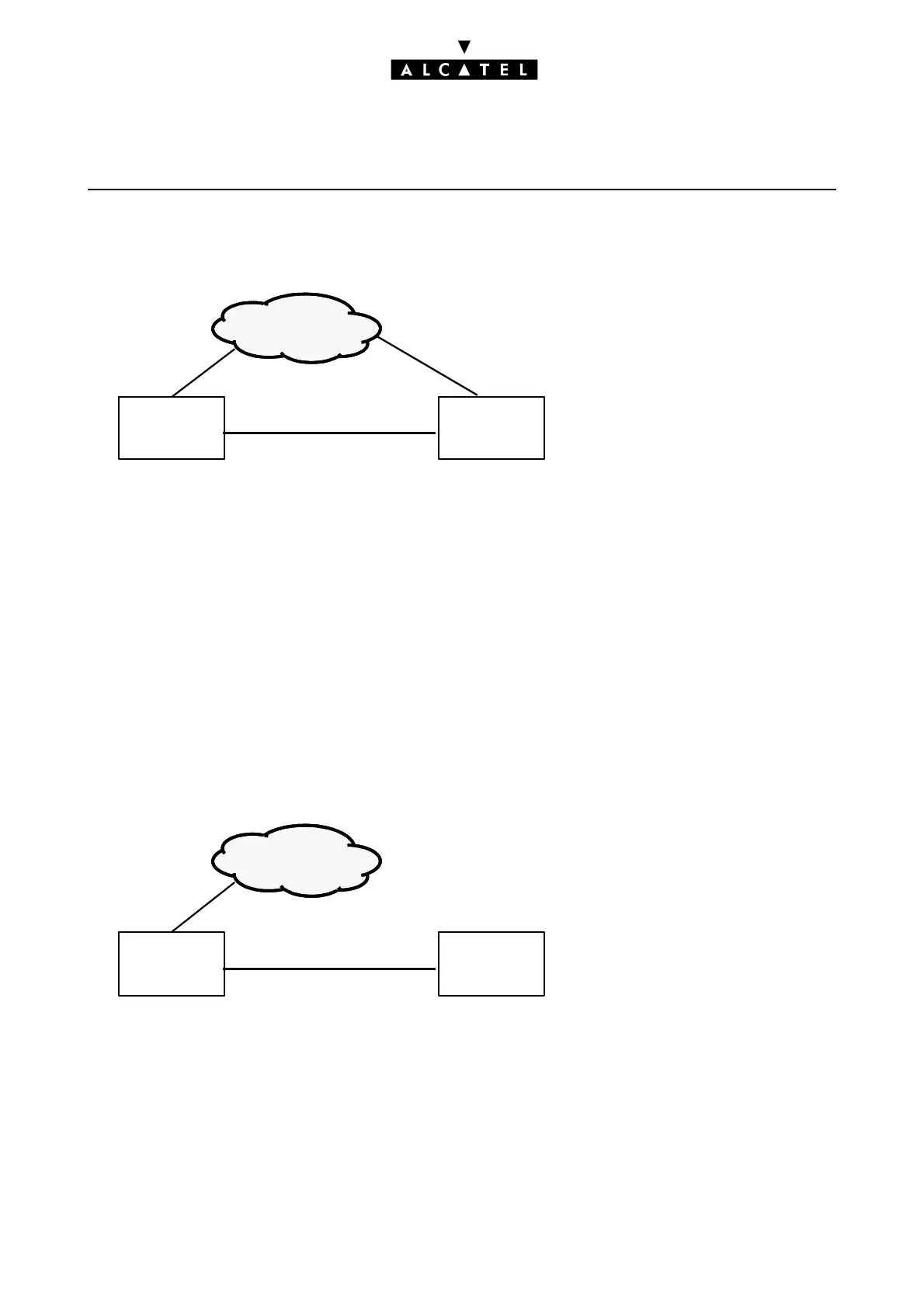CLOCK SYNCHRONIZATION CALL SERVER : PRIVATE NETWORKS
Ed. 044/4 Réf. 3EH 21000 BSAA
RESTRICTIONS
The 2 configurations below present situations which lead to operational restrictions.
Synchronization of the QSIG on PABX B has priority over the synchronization of the T0 on PABX B:
- a subscriber belonging to A is in an external communication (simultaneously or not with subscribers
on B) -> no problem.
- no external communication in A: A operates on the local clock.
A subscriber belonging to B makes an external call: B remains synchronized on A and is therefore
not synchronous on the public network -> no data transmission from B to the network.
Synchronization of the T0 of PABX B has priority over the synchronization of the QSIG:
- a subscriber belonging to B is in an external communication (simultaneously or not with the subs-
cribers on A) -> no problem.
- a subscriber belonging to B is in an external communication: A operates on the local clock -> no
data transmission between B and A via the QSIG link.
- no external communication in A or B: A and B operate on their local clocks -> no data transmission
between B and A via the QSIG link.
B is synchronized via the QSIG link of PABX A:
- a subscriber on A is in an external communication -> no problem.
- no external communication in A: A operates on the local clock; this clock is supplied to B -> DECT
problems in B.
- if B has a non-permanent T0 link, the DECT problems will be compounded by the problems from
the previous case.
PUBLIC NETWORK
PABX A PABX B
QSIG link
Non permanent T0
Non permanent T0
master
slave
PUBLIC NETWORK
PABX A
master
PABX B slave
with DECT
QSIG link
Non permanent T0

